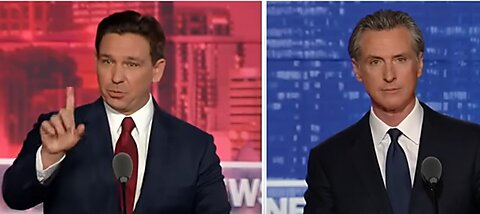
Romina Boccia and Dominik Lett
The federal government may be heading toward a partial shutdown as soon as this weekend as Democrats and Republicans remain at great odds over funding bill details, including how much to spend on regular appropriations. In addition to disagreements over additional border funding, Ukraine aid, and disaster assistance, neither the House nor the Senate have fully embraced the spending limits agreed upon in the May debt limit deal, with the House seeking to spend less and the Senate seeking to spend more by abusing a budget deal loophole.
The May Fiscal Responsibility Act set spending limits on discretionary funding but left a loophole for any spending designated as an emergency. In 1991, the Office of Management and Budget laid out five criteria all emergency and disaster spending should meet: necessary; sudden; urgent; unforeseen; and not permanent. Under current law, however, Congress can label pretty much anything as emergency spending, making it exempt from budgetary enforcement mechanisms.
In other words, the Fiscal Responsibility Act’s $1.59 trillion discretionary spending cap for fiscal year 2024 has little to no bite if appropriators decide the caps shouldn’t apply. By late July, the Senate Appropriations Committee did just that, promising to add $13.7 billion in emergency spending to circumvent discretionary caps. They went a little overboard, designating nearly three times that amount as emergency spending.
Each year, Congress is supposed to produce 12 spending bills—often combined into an omnibus bill—which fund everything from the Department of Defense to the Department of Energy (about 27 percent of total federal spending). Across 9 of the 12 annual appropriations bills, the Senate allocated $37 billion in net emergency spending (known as “budget authority,” or BA). That’s just $3 billion less than Biden’s latest Ukraine funding request.
The emergency Ukraine package saw significant pushback from the House. The Senate’s “regular” emergency appropriations should face yet more scrutiny for being in blatant violation of the May debt limit deal spending caps.
Last month, we examined the $2 billion in “emergency” spending provided by the Commerce, Justice, and Science (CJS) appropriations bill. Most of it was not for urgent, unexpected, and temporary events. Here we examine the remaining $35 billion in Senate discretionary funding designated for emergencies. Table 1 details emergency designations broken down by Senate appropriations bills. These funding items do not qualify as emergency spending under any reasonable definition of the term.
Housing assistance
The Senate designates $13 billion in housing and rental subsidies as emergency spending (S.2437 & S.2624). See Table 2 for a breakdown. About $10 billion goes to tenant- and project-based rental assistance such as Section 8 vouchers. These Housing and Urban Development programs have been argued over for half a century—that hardly sounds like an unexpected and temporary expenditure.
They are also a harmful use of taxpayer dollars. As former Manhattan Institute scholar Howard Husock explains, “Federal interventions undermine neighborhoods, encourage dependency, and create disincentives for long-term maintenance and improvements in housing. They also rest on the false premise that the private sector cannot provide housing for those of modest means.”
Defense
The Department of Defense receives $8 billion in emergency budget authority (S.2587). None of the funds address emergencies. Take the $2 billion Congress provides to address “revised economic assumptions” and “higher than anticipated fuel costs.” One year earlier, Congress was able to budget for similar costs without resorting to emergency designations.
Another $2 billion goes toward so-called “unfunded priorities”—essentially wish-list items that didn’t make the base budget. Providing emergency funding for these unfunded priorities can incentivize “budget gamesmanship,” where the Department of Defense places critical programs on the unfunded priorities list. This process inflates total defense spending and undermines fiscal commitments. If these priorities merit funding, appropriators should budget for them within existing budget caps, following the regular process.
What about the $1 billion appropriation to “address defense industrial base capacity and workforce shortfalls?” People say the defense industrial base is declining. If this is true (debatable), it is partly due to budget unpredictability. When contractors fail to meet deadlines (often under short-term contracts), they come running to Congress to ask for more money in the following year. The result is a mismatch between funds and good strategy. Overreliance on emergency spending is part of the problem—not the solution.
If policymakers want to strengthen national security, they should reevaluate protectionist “Buy American”–style laws or consider reforming defense contracting to allow for more innovative small businesses to compete. Policy reforms in either area would have the added benefit of pushing costs downward by welcoming more goods and services suppliers, thus increasing competition.
Foreign aid
Foreign aid receives nearly $2 billion in emergency funding (S.2438). Congress provides $1.1 billion for international disaster assistance—a massive slush fund for natural disasters, disaster preparedness, or food security and $900 million is for general economic aid (some of which is for Ukraine and surrounding states). The related statutory language is similarly vague. Ultimately, the dispersion of this aid is largely left up to the president and the United States Agency for International Development (USAID).
Most of fiscal year 2024’s international aid is not considered emergency spending. Indeed, the $2 billion in additional emergency spending has no reasonable justification for being urgent, unexpected, and temporary in nature. International disaster assistance appropriations and Ukraine-related economic aid deserve the same oversight and trade-off considerations the rest of the discretionary budget process faces.
Health research
Health research and administration gets $1 billion in emergency funding (S.2624). Most of that budget authority is for federally funded research programs such as the National Cancer Institute, National Institute of Neurological Disorders and Stroke, and National Institute of Mental Health. Setting aside the limitations of federally funded research, all of these line items are recurring or predictable. They do not merit emergency designations.
Other spending tricks
Across two bills, the Senate provides $4 billion in gross budget authority for refugee and migration assistance (S.2624 & S.2624). However, about $2 billion comes from a transfer in previously allocated emergency budget authority from “United States emergency refugee and migration” to “Enduring Welcome Administration and Support”—an Afghanistan refugee program. The net emergency budget authority for refugee and migration assistance is $2 billion.
The canceling of certain budget authority—sometimes called rescissions—was a more frequent feature of previous decades. In some cases, rescissions promote more responsible spending. By canceling existing budget authority, appropriators can justify new expenditures without breaking the bank. Unfortunately, some rescissions obscure the true cost of spending by rescinding funds that were already scheduled to expire or were unlikely to be spent altogether. Based on CBO’s projections by spending accounts, it looks like Senate appropriators are shifting unspent funds around rather than making real cuts.
Restrain emergency spending
At the core of the emergency spending exemption is a good idea—sudden, urgent events may demand budgetary escape valves. However, the latest round of Senate appropriations demonstrates just how strong the temptation is to use emergencies as a justification to evade discretionary spending caps. Routine abuse of emergency designations erodes the credibility of fiscal commitments and adds to deficits and the already unsustainable growth in the debt.
Congress should commit to restraining emergency spending. Establishing a mechanism like CUTGO to account for emergency spending and offset could restore fiscal credibility and reduce the temptation to abuse emergency designations. Such a mechanism could retain the emergency cap exemption, track spending (plus interest costs), and reduce discretionary limits over the following five years.
Congress should incentivize and commit to forward-looking budgetary planning to gain control of America’s worsening fiscal trajectory and restore transparency and accountability in federal budgeting. Budgeting and paying for emergency spending is a good place to start.








